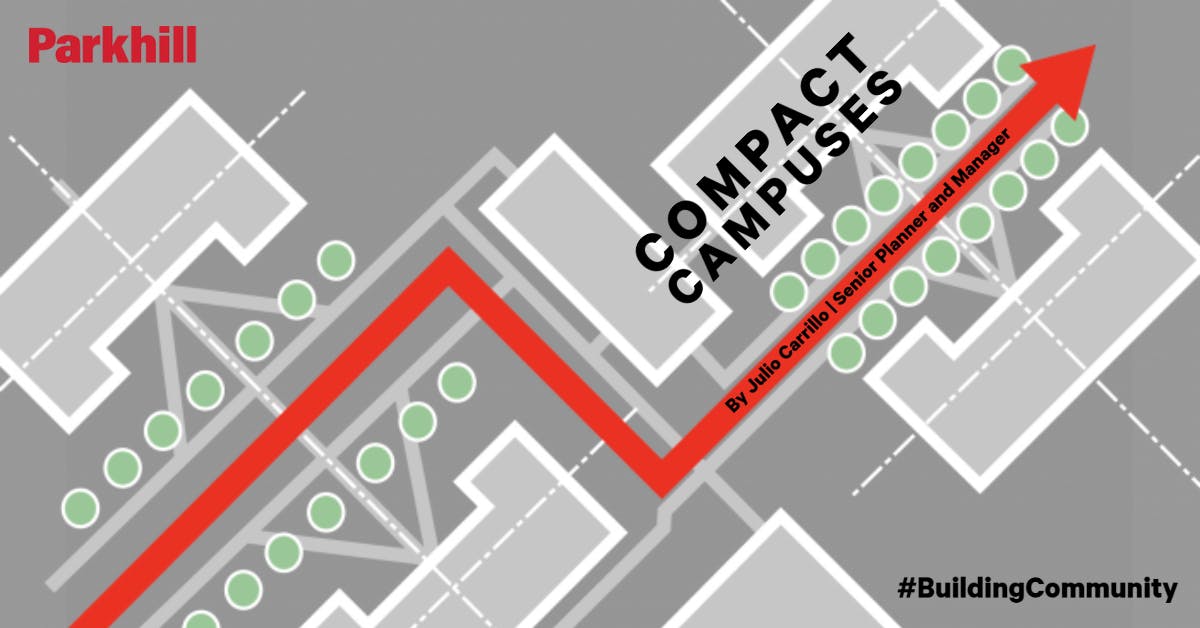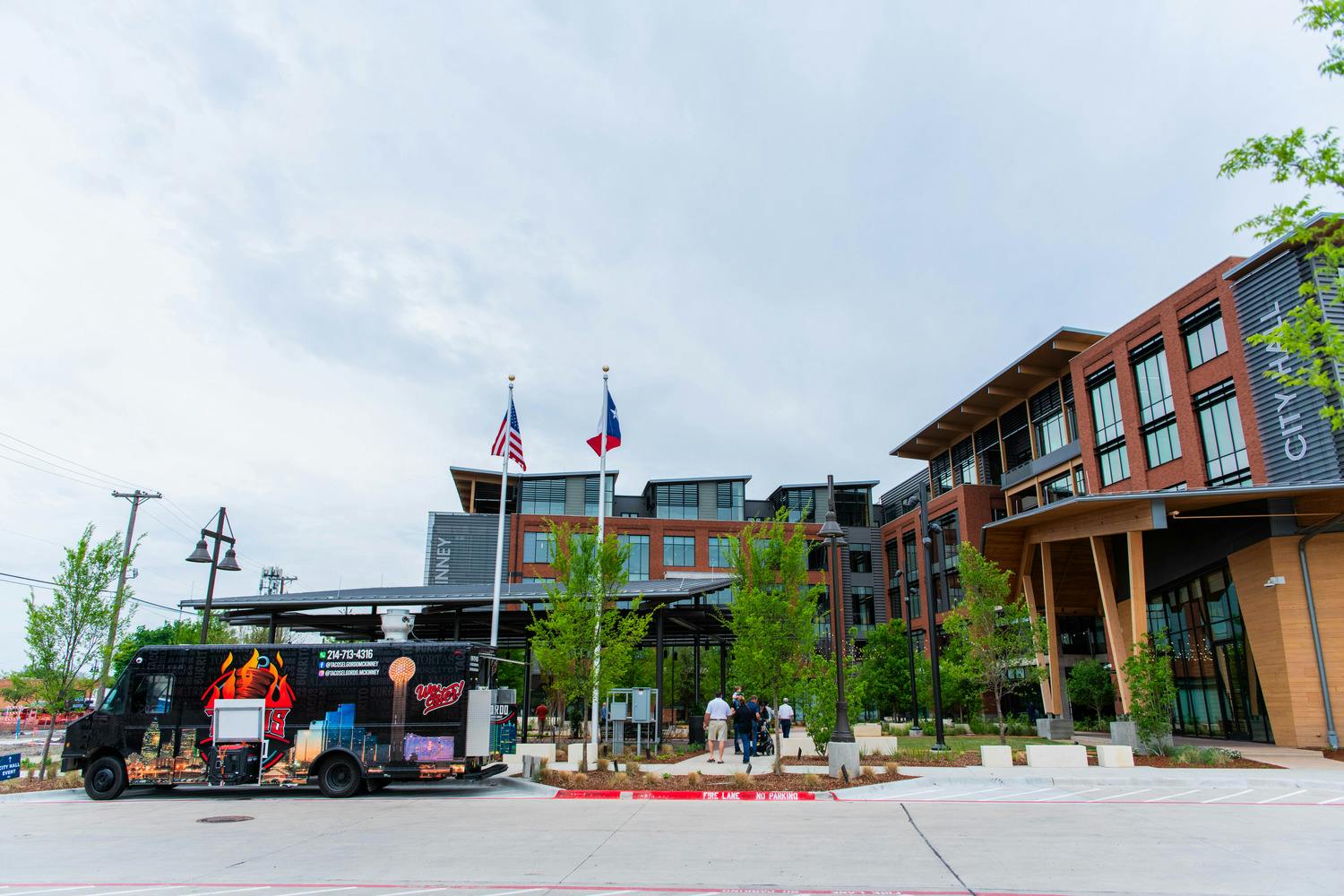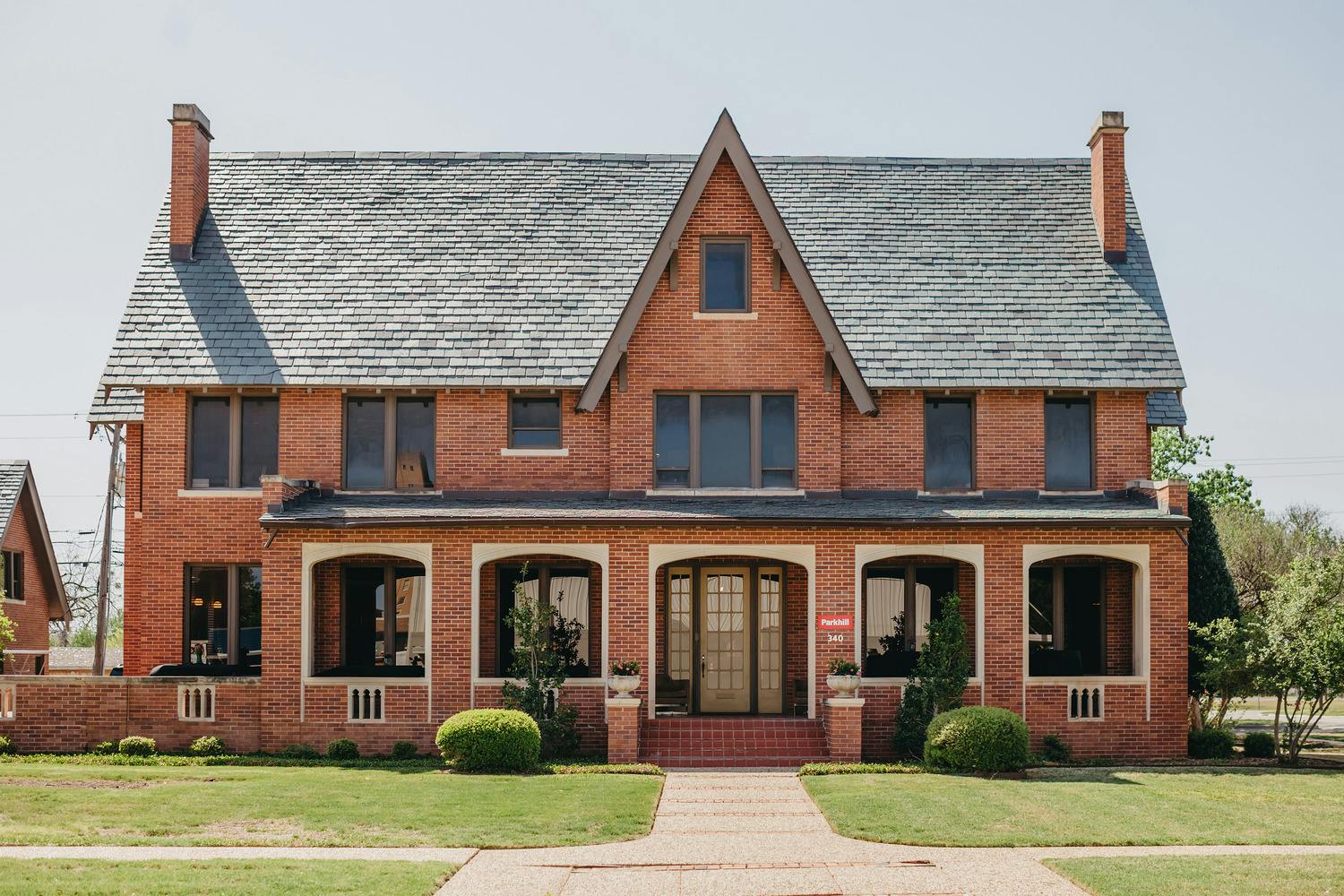Compact Campuses Help Save Money in Higher Education Institutions
Category: Planning
Written By: Julio Carrillo, AICP, LEED AP ND
Date: August 3, 2020

Julio Carrillo, AICP, LEED AP ND, is a Senior Planner & Manager with Parkhill’s Landscape Architecture & Planning Sector. With over 15 years of experience, he has managed and directed projects ranging from architecture and green building consulting to urban design and community planning. Through his diverse knowledge of residential, multifamily, corporate office, educational, institutional, municipal, and neighborhood design, Julio builds communities, not only projects.
Abstract
This paper aims to describe the correlation between compact campus fabrics and financial performance. While highlighting the financial benefits of building compact, it also aims to reflect on the importance of designing human/pedestrian-friendly places.
In a post-COVID19 era, where behavior around the world has shifted to physical distancing, the most common response has been a collective aversion to dense and populated spaces. With increasing evidence supporting that high COVID-19 infection rates are not linked with densely populated places, a challenge is still present for reinforcing the idea of safe, compact, and dense areas.
On a similar supportive note, the article intends to highlight the value of imagining the utilization of outdoor space more prevalently and effectively for student use, common space, and interim learning space during the adaptive period post-COVID in the college and university environment.
With the challenge for utilization of open spaces, we acknowledge the need to reinforce the benefits of social interaction in safe and friendly open spaces. Outside of our human confinements during the COVID-19 pandemic, there is a great amount of opportunity for healthy interaction within our urban realm.
For Planners and Urban Designers, who design urban places that are inspired by the health and safety interactions for humans, the incorporation of financial and economic concerns is also a highly important piece of their design process. COVID-19 has highlighted that economic vitality and human interaction are basic parts of the vitality of a community. With this reflection at hand, this paper looks into Planning and Placemaking aspects and their relationship with economic/financial performance.
Correlations found in this study suggest that compact campuses tend to provide a high potential for savings to higher education institutions. This study is built upon the reaffirmation of compactness as an efficient way of building cities and communities. This sustainable approach provides not only environmental benefits but also positive social and economic performance.
We acknowledge that, in this specific case study of 12 academic institutions, the dynamics of campus compactness might differ a little from large cities and communities. Although, some of the institutions in this analysis represent a significant portion of the economic and social vitality of their cities and/or communities.
From this analysis, we deduct that building a compact campus is one of many factors that will contribute to long-term and short-term savings for academic institutions. We have listed some strategies at the end of the paper to summarize a few points that these institutions should take into consideration in future planning and construction of buildings.


